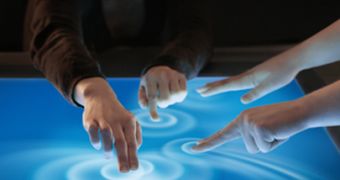When Microsoft announced that the upcoming SDK for its next generation Surface computer will also enable developers to seamlessly take the applications to both version 2.0 of the tabletop device and to Windows 7 machines the obvious question that I had to ask was “What about Windows 8 PCs?” “One (…) cool thing about the Microsoft Surface 2.0 SDK worth taking note of is that you can use it target apps for both Microsoft Surface hardware and Windows 7 touch-enabled PCs too,” Microsoft’s Brandon LeBlanc noted, repeating what Luis Cabrera-Cordón, Platform Program Manager – Microsoft Surface said just a day before.
My Windows 8 and Surface 2.0 SDK inquiry quickly evolved past its only apparently intrinsic rhetorical nature, got packed in an email and found its way to Microsoft.
Here is the answer I received from a Microsoft spokesperson yesterday:
“One of the key components of the Samsung SUR40 SDK is the Microsoft Surface Input Simulator that enables you to send rich touch data to both Surface applications and Windows 7 touch enabled applications on any Windows 7 PC, providing efficiency for developers. The Input Simulator will allow developers to develop Surface applications on a Windows PC.
“In regards to Windows 8 form factors, we are not discussing potential future products at this time.” (emphasis added)
Personally I see no reason why apps developed with Microsoft Surface 2.0 SDK won’t also work on both Windows 7 and Windows 8 NUI equipped computers, but I don’t want to speculate on this matter at all.
Microsoft Surface 2.0 SDK will become available to developers next week, as of July 12, 2011. Samsung SUR40 for Microsoft Surface 2.0 devices will hit commercial availability later this year.
“The Microsoft Surface Team announced that next week they will be releasing the Microsoft Surface 2.0 SDK and other tools for developers to start developing Surface applications for the next generation Surface device – the Samsung SUR40. Starting on July 12th, the SDK will be available for download free to anyone who wants to start developing new Surface applications from the Microsoft Download Center,” LeBlanc added.

 14 DAY TRIAL //
14 DAY TRIAL //